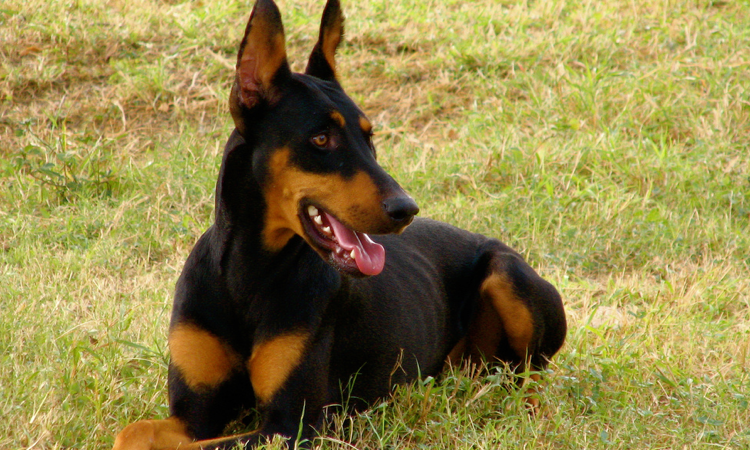Sitting still may seem simple for us humans, but it can be a challenge for our enthusiastic furry doggy friends. Training your dog to stay will help them in a multitude of situations, from crossing the road or waiting patiently while you open the front door, to allowing them to excel in doggy sports such as agility and flyball.
In this guide we’ll talk you through how to train your dog to stay and how to build up the command until they have admirable self-control in almost any situation. Here goes! (Or should that be “stay”…
How to train your dog to stay: a step-by-step guide
Pro-tip: before your dog can master this command, they ought to have first mastered how to sit. Need to brush up on their sitting command? Check our guide for how to train your dog to sit.
- Find a quiet indoor space with minimal distractions. Ask your dog to sit.
- Raise one hand and say “stay” or “wait”.
- Take one step slowly backwards. If your dog obediently remains in the seated position, return to them and give a treat with lots of praise. Remember – at first your dog may only be able to hold a stay for half a second. It takes time to build up to a longer duration and any type of control should be rewarded to begin with.
- Once your dog can hold a stay for a few seconds or more, gradually increase the number of steps you take before you return to treat them.
- Eventually, you should be able to build up to a longer duration with your dog sitting in a stay and waiting for you. If your dog can’t remain in the sit position until you get back, simply decrease the space between you and the time duration until they can.
- When your dog is reliably holding a sit and stay when asked, you can introduce a release cue such as “come” or “okay”. This lets them know when the stay is over and when they have permission to move towards you, rather than waiting for you to come back to them.
Training your dog to hold an advanced stay

Once your dog is reliably holding a stay position for four or five steps, you may want to introduce other elements. Most dog trainers call these the ‘three d’s’ which are distance, distraction and duration. Asking your dog to hold a stay for a long amount of time, when your back is turned, or when there are lots of distractions is much harder.
Train your dog to stay for longer durations
- First, consider your dog’s physical comfort. If you want them to stay while you go and look at the car, or fix a leaky tap, a sit may be uncomfortable to maintain for more than a few minutes. Likewise, if you are asking them to stay in the middle of a park, lying down may make your dog feel slightly vulnerable.
- Once you have asked your dog to sit or lay, practice being within close distance to them but asking them to hold the stay for a whole minute or two.
- Once they are able to do that you can build up to a longer duration; for example, challenge your dog to hold a stay for 10 or 15 minutes.
- Now that you’ve nailed the duration element, move on to pairing this with a further distance, or with more distractions.
Train your dog to stay from a distance
- Ask your dog to sit.
- Build up from one pace, to five or six until you can get a reasonable distance from your dog without them breaking the stay. At first, keep the duration low. If your dog can cope with you being a few metres away for five seconds, build up to 10 seconds, then 20 and so on.
- Gradually increase the distance, walking away slowly, until your dog can maintain a stay with you far away or even out of eyesight (which is usually the most challenging for many dogs).
Train your dog to stay during distractions
- Once your dog can do a basic stay at home, begin introducing the command within a more distracting environment. Head to the park, ask your dog to sit and step away a couple of paces, for a few seconds.
- Once they can sit, hold the stay for this duration and distance without being distracted by other dogs, chasing birds or smells in the grass, gradually increase both duration and distance.
- Add additional steps and a longer duration, ensuring that your dog doesn’t break their stay.
- Eventually, try this when there are other distractions around. Start slowly; another dog in the distance is much less of a distraction than a dog running right up wanting to play with your dog.
- If your dog gets distracted and gives into temptation this is natural. Go back to step one and start slowly again or minimise distractions until they can master the control needed. Keep sessions short, it requires a huge amount of discipline and concentration for a dog to hold a stay in a distracting situation.
Can your dog hold a stay? Let us know in the comments below, or share your pictures with the DogBuddy community on Facebook , Twitter or in the comments below.